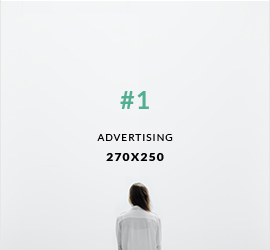Design words that you should know
The detail of an image based on the number of pixels is known as resolution. An image looks clearer when it has a higher resolution.
2- DPI
DPI stands for “dots per inch,” which is a measure of a printer’s quality. For high-quality printing, 300dpi is recommended. For example, a 300dpi image at 1200×1800 pixels will become as a 4×6 inch print.
3- PPI
PPI stands for “pixels per inch,” which is a measure of pixel density used by electronic image devices. You’ll likely see this used with scanners, cameras, TVs or monitors. Learn more about the difference between DPI and PPI.
4- Bleed
Sounds pretty gruesome, but bleed is when a design actually extends past its printed edge so there’s no chance of white borders when it’s trimmed down after printing.
5- Trim
Trim size is the final size of a printed piece after it has been trimmed from its page. Trimming is executed along crop marks that show where to cut.
Design words that you should know
The rule of thirds is a technique that designers use to determine focal point. Using a grid of three rows and columns, focal points are indicated where the lines converge. Designers use this as a guide to determine where to place important elements in their design.
2- Grid
A grid is a series of intersecting vertical, horizontal, angular or curved lines used to organize graphic elements on a page, as well as in relation to one another.
3- Hierarchy
In design, hierarchy is the organization of elements by level of importance. Newspapers, magazine spreads and movie posters are good examples of the use of design hierarchy. Headlines (also called display type) are usually placed at the top, while subheads and body copy fall underneath.
4-Scale
Scale is the size of an object in relation to another object (not that thing in your bathroom that you curse at each morning). Scale can be used to create interest and grab a viewer’s attention.
5- Thumbnail sketch
When conceptualizing, a designer will often create small, rough drawings—thumbnail sketches—to explore many ideas.
6- Mock-up
A mock-up is a real or digital model used to test early design ideas and see how they could look in the real world.
The way in which design elements are grouped or spaced on a page is called proximity. Great design groups like elements together.
2- Alignment
Alignment is the position of text or graphics, whether left, right, centered or full justified..
3- Repetition
To maintain a unified look, designers repeat elements throughout a design. (Repetition is also defined as the number of times your toddler asks for a cookie.)
4- Contrast
Contrast is achieved by including elements within the design that look measurably different from one another. A designer may use color, shape, texture, size or typeface to create contrast.
5- White space
White space—sometimes called negative space—is the part of the design that is unmarked by imagery or text. It’s also what Midwesterners call their depressing, winter landscape.
Dear followers,
Kindly share with your friends,
I will offer an HD vector illustration image for up to 10 followers
who will like this post and share it!
~FOR FREE~
So to enter this competition you need to do the following:
1- like
2-share on your social media platform
3-comment " I WANT "
Then you are in
10 of you will win a free artistic illustration for a photo of his choice.
The illustration will look similar to this one here ↓↓
Kindly share with your friends,
I will offer an HD vector illustration image for up to 10 followers
who will like this post and share it!
~FOR FREE~
So to enter this competition you need to do the following:
1- like
2-share on your social media platform
3-comment " I WANT "
Then you are in
10 of you will win a free artistic illustration for a photo of his choice.
The illustration will look similar to this one here ↓↓
Good luck to all :)
do not forget to like and follow me on
1- Composition and layout
Composition is the arrangement of design elements that form a whole image. A successful composition attracts the viewer and guides their eye across the design. In visual art, you might hear this referred to as “form.” In graphic design, it’s often called layout. Composition is made up of a number of different visual design elements, including balance, proximity, alignment, repetition, contrast and white space.
2- Balance
This isn’t your ability to walk a straight line after three beers. In design, balance involves the placement of elements on the page so that the text and graphic elements are evenly distributed. There are three ways to achieve balance: symmetrically, asymmetrically and radially.
3- Symmetrical
Symmetry is achieved when all design elements are equal on both sides of a central line
4- Asymmetrical
When graphics and text are not equal on both sides of a central line, a design is said to be asymmetrical. In the example above, there is still balance, but there are graphics on one side and text on the other
5- Radial
A radial design is one in which elements radiate from a central point, creating balance.
Featured Post
تعليم برامج الادوبي
مرحبا . بلشت نزل فيديوات باللغة العربية قناتي في اليوتيوب لتعليم برامج الادوية. لمزيد من المعلومات رجاء تسجيل في القنات الفيديوات للمب...



